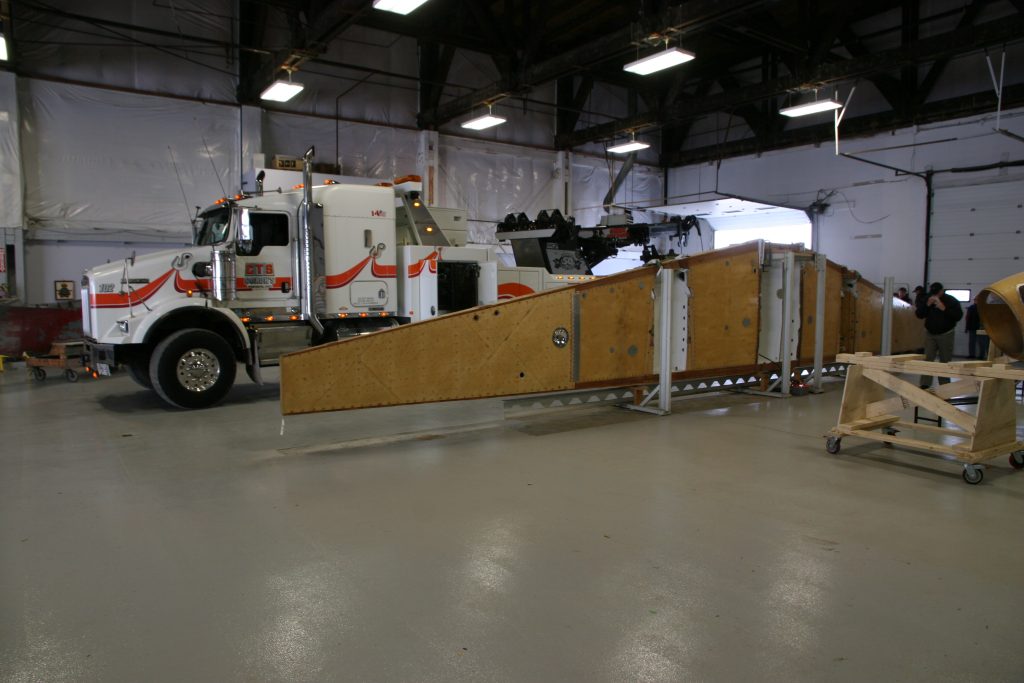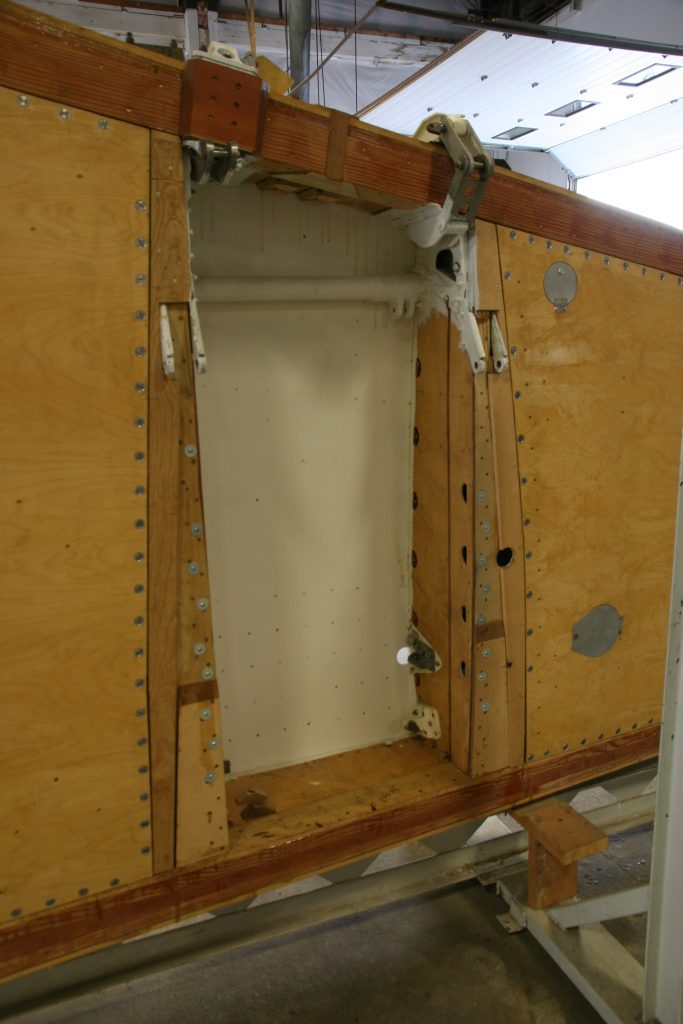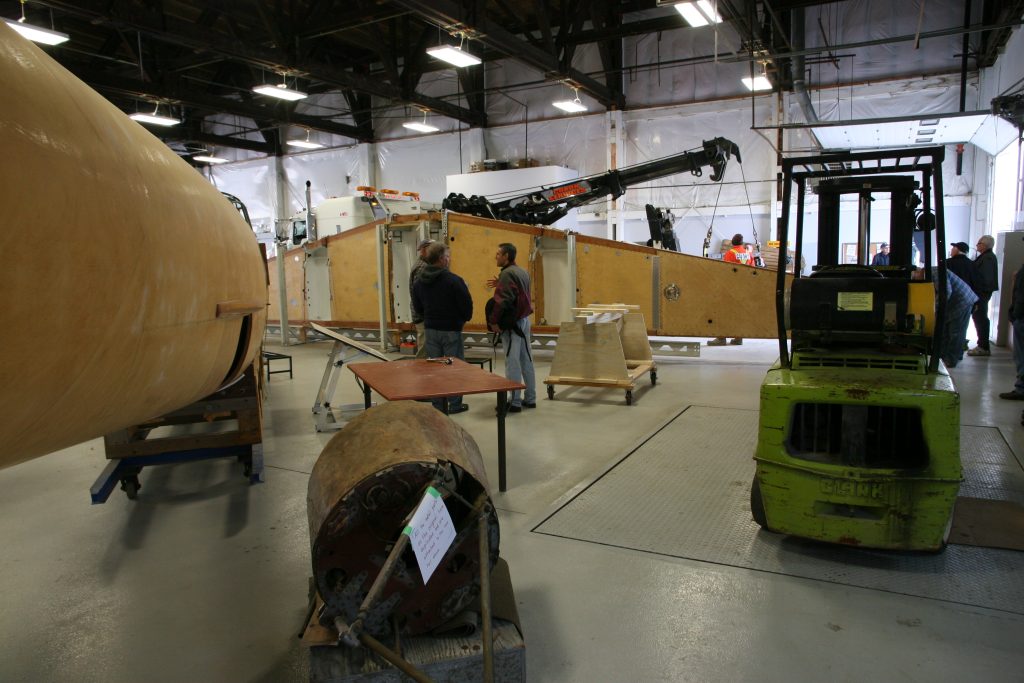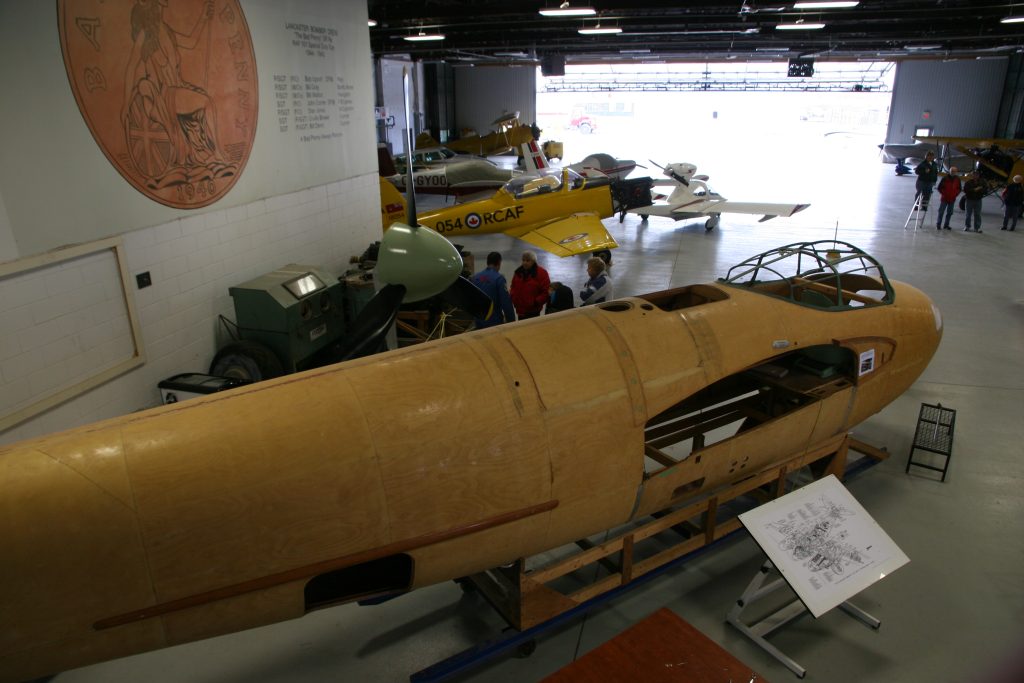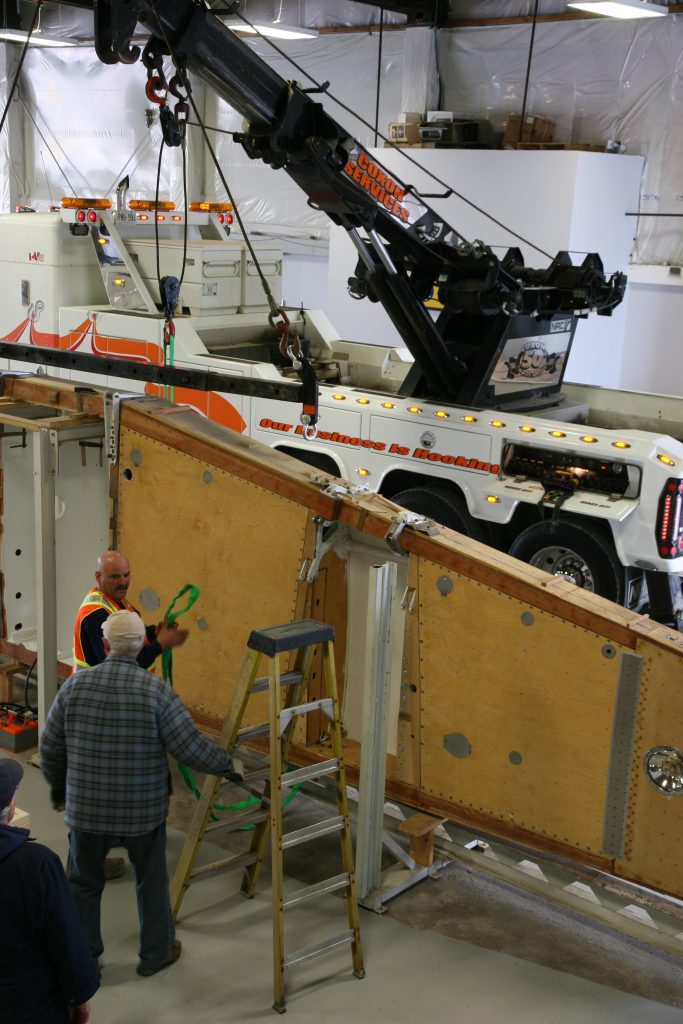De Havilland Mosquito

Aircraft Details
- Model: de Havilland DH98 Mk XX Mosquito
- Crew: 2: pilot, bombardier/navigator
- Length: 44 ft 6 in (13.57 m)
- Wingspan: 54 ft 2 in (16.52 m)
- Height: 17 ft 5 in (5.3 m)
- Max. takeoff weight: 25,000 lb (11,000 kg)
- Powerplant: 2 × Packard Merlin 225 liquid-cooled V12 engine, 1,620 hp each
- Maximum speed: 361 kn (415 mph, 668 km/h) at 28,000 ft (8,500 m)
- Range: 1,300 nmi (1,500 mi, 2,400 km) with full weapons load
- Service ceiling: 37,000 ft (11,000 m)
- Rate of climb: 2,850 ft/min (14.5 m/s)
- Bomb Load: 4,000 lb (1,800 kg)
Aircraft Description
- Fastest Piston Engine Aircraft of WW-II
- Affectionately known as a “Mossie”, it is constructed primarily of wood due to scarcity of aluminum. (Aluminum was being used for the construction of the heavy bombers like the Lancaster and various fighter aircraft.)
- This aircraft is unique at the CAM as it is a ‘re-construction’ rather than a restoration. The team is building a brand new “vintage plane”
- With 2 Rolls-Royce Merlin engines, and its lightweight construction, fighter escort aircraft like P51 Mustangs and Supermarine Spitfires found it hard to keep up.
- 145 Mk XX’s were built at the de Havilland plant at Downsview, Toronto
- Some parts for this project were recovered from a Mosquito crash site Pelly Lake and shipped to Windsor.
- Our Mosquito group at the CAM is building this replica of ‘KB 161 “City of Vancouver”, to honour and commemorate the crew of that aircraft for their sacrifice.
- Our aircraft (KB161 Vancouver) was primarily used as a “Pathfinder” or pre-bomber as it were.
- It would fly in advance of the heavy bombers and drop targeting flares over the areas to be bombed because it could get in and out of the area quickly.
- The heavy bombers would then follow and drop their loads.
- The fuselage was sourced as a prototype off of a mould in New Zealand. Substantially all the rest of the plane has been built by CAM volunteers over the past 20 years.
Merlin Engine Startup!
Follow Our Progress on Facebook:
History of our Mosquito Project
Our Mosquito bomber project began in 1993 as the dream of Tim Gillies to build a “Mossie”. The formation of the Windsor Mosquito Bomber Group followed and in 1996, a group headed by Gillies travelled to the Northwest Territories to recover parts from a downed Mosquito. They returned with two Rolls Royce Merlin engines, the escape hatch, landing gear, propellers and cockpit canopy. Much of it was severely damaged but extremely valuable as reference for the re-building process.
In 1997, Dave Eaddie, who worked on Mosquito bomber wings for the de Havilland Corporation during the Second World War, came on board and removed a wall in his basement to start building the spar, the spine of the wing.
Fast forward to 2002 and Papakura, New Zealand. Glyn Powell had spent 10 years of his life building fuselage moulds for the Mosquito aircraft and the first tryout skins were close to being finished. The Mosquito Bomber Group had committed to accepting this first fuselage in return for payment and machine jigs, to be built in Windsor. They returned from New Zealand with the fuselage and moved their operation to #7 E.F.T.S., home of the CH2A. The decision was also made to dedicate and re-name the aircraft to Mosquito KB161.
The work continues to proceed by an incredible group of volunteers!
History of the de Havilland Mosquito
The Mosquito Fighter/Bomber was of a novel design and the fastest aircraft of its time. Constructed of wood due to shortage of aluminum and powered by two of the famous Rolls-Royce Merlin engines, it was faster than all of the WWII fighters.
The first unofficial flight of a Canadian built Mosquito took place on September 24, 1942. 1,076 of all variants were built in Toronto with 145 of them Mk XX’s.
The first five Canadian built Mosquitos were named after the cities that donated the most money in the last Victory War Bond Drive: Acton, New Glasgow, Moose Jaw, Saskatoon and Vancouver.
The history of the development of the de Havilland Mosquito is brilliantly explained by this video from the Imperial War Museum – Duxford.
Our Mosquito Commemorates Mosquito KB161
On Thurs. May 11th, 1944, Mosquito KB161 took off from Upwood, England at 2205 hours with a load of TI (target indicator) flares for an attack on the I.G. Farben Chemical works in Ludwigshafen, one of 12 of 139 Squadron Mosquitoes raiding this and Mannheim. Poor visibility hampered the attack, but F/O Geoffery Lewis and F/O Alan J.A. Woodland found their objective and released their pattern of flares.
As the Mossie returned to base, unbeknownst to the crew, a marker flare had hung-up on a bomb bay door, and when the aircraft descended thru 2000 feet, the barometric fuse detonated it. The cockpit was immediately filled with dense white smoke, which partly cleared when F/O Lewis opened his cockpit window. Realizing there was a major fire in the bomb bay, the crew decided to bail out. F/O Woodland released the floor hatch, clipped on his parachute and attempted to leave, but the slipstream from a 300mph dive pinned him against the back of the hatch, and it was only through F/O Lewis pushing him out with a boot on his head that he was able to survive. The Mosquito dove into the ground in flames at Field View Farm, Chittering, Cambridgeshire at 0125 hours and was totally destroyed. F/O Lewis did not get clear and was killed in the crash. He was 23. Lewis is buried at ST. Matthews Churchyard, Overseal, Derbyshire.
Our Mosquito group at the CAM is in the process of completing a replica of KB 161 “City of Vancouver”, to honour the crew of that aircraft for their sacrifice.

